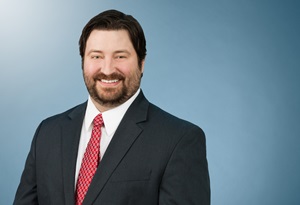Minnesota Legislative Update: Governor Releases $2 Billion Capital Investment Proposal
During a series of press events over the last week, Governor Tim Walz (DFL) released his $2.028 billion capital budget proposal. Dubbed the “Local Jobs and Project Plan,” the Governor’s proposal prioritized affordable housing, water infrastructure, higher education, public safety and quality of life projects. Minnesota law requires the Governor to release his budget by January 15 on even-numbered years. Minnesota Department of Management and Budget Commissioner Myron Frans reported that the amount of all bonding project requests was $5.3 billion, with state projects totaling $4 billion of this amount and local requests comprising the rest.
The House and Senate Capital Investment Committees will use the Governor’s budget as a starting place for crafting their own capital budgets when the legislative session begins on February 11, 2020. Capital budget bills need a three-fifths, super-majority vote in order to pass them, or 41 votes in the Senate and 81 votes in the House. This is a primary focus of the legislature in the 2020 session. During the final hours of last session, the legislature attempted to pass a $500 million capital budget bill but was only able to agree to $60 million in housing infrastructure bonds before adjourning. In 2018, the legislature passed a $1.43 billion capital budget bill.
Leaders in both the House and Senate have said they want to pass a bonding bill this year. House Speaker Melissa Hortman (DFL – Brooklyn Park) has voiced her support for a robust bonding bill. House Minority Leader Kurt Daudt (R – Crown) has said that passing a bonding bill is a priority, but it must be a “reasonable” size and closer to $1 billion. Senate Majority Leader Paul Gazelka (R – Nisswa) has said that he is interested in passing a bill that is similar in size to past bills, which would be less than $1 billion.
Highlights of the Governor’s proposal include:
Affordable Housing
Governor Walz proposed investing $276 million in safe and affordable housing projects around the state. $200 million of the $276 million would go toward Housing Infrastructure Bonds, which are awarded statewide on a competitive basis to housing developers. The funds can be used to acquire, rehabilitate or construct permanent supportive housing or to acquire land to be held in community land trusts for single-family home ownership.
The Governor’s press release announcing his affordable housing bonding proposal can be found here.
Water Quality and Infrastructure
Governor Walz proposed investing $300 million in replacing aging infrastructure and upgrading water treatment facilities. Within this proposal, $100 million would go toward the Water Infrastructure Funding (WIF) program, which helps communities with drinking water infrastructure projects, and $75 million would go toward the Point Source Implementation Grants (PSIG) program, which helps communities pay for water treatment plant upgrades.
The Governor’s press release announcing his water quality and infrastructure proposals can be found here.
Higher Education
Governor Walz proposed $447 million to focus on higher education facilities. This money would be used to maintain, update and modernize public college and university campuses across the state. The Minnesota State Colleges and Universities systems would get $142.5 million for repairing and replacing buildings in this proposal. The University of Minnesota campuses would get $125 million for asset preservation with this proposal.
The Governor’s press release announcing his higher education proposal can be found here.
Transportation and Transit
Governor Walz proposed $280 million in GO bonds for transportation projects. The largest allocations are $112 million for the Local Bridge Replacement program, helping over 9,500 deficient local bridges, and $100 million for Local Road Improvement Fund grants. Approximately $169 million in Trunk Highway bonds for local road projects is also included. Governor Walz did not include state highway projects in his plan due to large costs, challenging the legislature to come back to him with a comprehensive transportation funding plan to address those needs.
For transit, Governor Walz included $70 million for the Met Council. The largest allocation is $55 million for Busway Capital Improvement Program Bus Rapid Transit. This funding would be used for design, environmental work, acquisition of right-of-way, engineering and construction.
Public Safety and Quality of Life
Governor Walz also proposed additional money for public safety, asset preservation and “quality of life projects.” The public safety package includes funding for armories, police stations and fire departments. The quality of life package includes funding for local community projects such as town halls, libraries, recreational trails and transit.
Governor Walz’s press release on his entire capital investment plan with a detailed breakdown of projects can be found here.
The material contained in this communication is informational, general in nature and does not constitute legal advice. The material contained in this communication should not be relied upon or used without consulting a lawyer to consider your specific circumstances. This communication was published on the date specified and may not include any changes in the topics, laws, rules or regulations covered. Receipt of this communication does not establish an attorney-client relationship. In some jurisdictions, this communication may be considered attorney advertising.


